What’s The Best First Gun?
Every doctor is used to being asked medical questions at a party, and I’m certain that mechanics get asked car repair questions in social situations. When people find out I write about guns, they inevitably ask something like, “I’m thinking about getting a gun. What’s the best first gun for me?”
My usual response is to finish my canapé, take a sip of my drink, and say, “Well, that’s like asking what makes a good first car. The transportation needs of a sixteen year old in the city vary greatly from those of a sixteen year old on a farm in the Midwest.” For the most part, that’s spot-on. A good first gun for plinking cans on the back porch is totally different than the best first gun for shooting clay pigeons out of the air. People buy guns for different reasons. The best first gun for one kind of shooting sport is probably very different from the best first gun for another.
Fast Facts: The Best First Gun
- The guns of today are better than ever before. This means your first gun is probably going to work well.
- The best first gun for you is a gun that’s easy to learn how to shoot well.
- 9mm compact pistols are a great balance of firepower, accuracy and ease of use.
We can make some educated guesses about who is buying guns and why they’re buying them. For instance, a recent survey of new gun owners conducted by the National Shooting Sports Foundation shows that target shooting and self defense are big motivators in buying a gun. So we will assume for the rest of this article that you’re looking for a gun (preferably a pistol) for target shooting, home defense, and personal protection.
Here’s where the first problem pops up. The retail buying experience inside most gun stores is nowhere near as nice as it is in other types of stores. Rather than grouping guns together by price, size, or intended use, most guns stores group the guns by brand name. This might help the store when it needs to count its inventory, but it’s very confusing for a customer looking for a first gun.
In addition, a lot of brand-specific technical jargon is tossed about. This makes the choice even more difficult. Panic and doubt start to creep in, followed quickly by analysis paralysis, brought on by all the decisions you need to make.
Finding The Best First Gun Is A Personal Decision
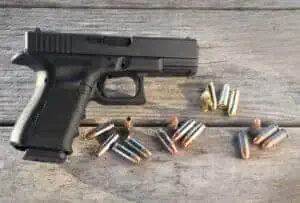 Just relax. We are in a golden age of guns right now. Your chances of selecting a truly awful gun are slim. Even better, there are a number of guns specifically designed for people who are looking for something that is easy to shoot, carry, and maintain while still having enough firepower to protect their life when it matters most.
Just relax. We are in a golden age of guns right now. Your chances of selecting a truly awful gun are slim. Even better, there are a number of guns specifically designed for people who are looking for something that is easy to shoot, carry, and maintain while still having enough firepower to protect their life when it matters most.
If that’s your situation, I recommend starting with a compact, poly-framed, striker-fired pistol chambered in 9mm. Good examples are the Glock 19, the Smith & Wesson M&P9c, the Sig Sauer P320 Carry, the Ruger SR9-C, and the FNS-9 Compact. All of these guns are very reliable, safe to handle, and easy to use.
Rather than concentrate on one brand name over another, let’s talk about the features these guns have in common.
Compact Size
The guns I’ve mentioned are reduced-size versions of full-sized service pistols, such as the Glock 17 (a very common pistol for law enforcement) and the Sig Sauer M7 pistol (a variant of the P320 that was chosen as the U.S. military’s new service pistol). The larger, full-sized versions of these guns work well on the belts of military and law enforcement personnel. However, the call soon came for smaller, easier-to-conceal versions for other applications. This led to the creation of compact 9mm polymer-framed pistols. Speaking of which…
Polymer Frame
All of these pistols feature a frame made of a high-strength plastic-type material (polymer), which forms the gun’s foundation. The frame holds the trigger mechanism and magazine in place. It also provides a place to mount the slide, barrel, and the rest of what makes a gun a gun. Contrary to what you might have heard, polymer-framed guns are not invisible to metal detectors or x-ray machines. The slide, barrel, magazine, internal workings, and ammunition all set off a metal detector. The gun itself shows up quite clearly in an x-ray.
The advantages of a polymer frame are that it weighs less than metal and doesn’t rust, but it still holds the gun’s parts securely and safely in place. Glock was the first company to make the polymer frame popular in pistols. Almost every gun maker has since followed their lead.
Striker-Fired
Speaking of Glock innovations, they were also the first company to make the striker-fired action popular in handguns. I’m a fan of hammer-fired guns, but I recognize that striker-fired guns have distinct advantages for first-time pistol owners. For instance, their safeties are typically built into the firing mechanism itself. This means the gun won’t go “BANG!!” until you make the conscious decision to pull the trigger (you DO remember the Four Rules Of Gun Safety, right?). This comes in handy if the gun is needed to defend a life, as you don’t have to think about flicking off a safety when seconds could mean the difference between life and death.
In addition, a striker-fired action gives you a consistent trigger pull with each shot. The trigger pull on a striker-fired gun is not quite as nice as it is on a hammer-fired gun. However, less training is needed to master a consistent pull on a striker gun versus other types of pistol mechanisms.
9mm Caliber
The 9mm cartridge is a great balance between magazine capacity, recoil, and power. If you’re new to guns, you might hear people talking about how the police use pistols chambered in .40S&W. Or, maybe someone will extol the “man-stopping” firepower of the .45 ACP round.

A Glock 19 holds 15 rounds of 9mm. A 1911 .45ACP magazine holds 8. Is the .45ACP twice as effective as 9mm? Not really.
The fact is, though, that modern bullets in 9mm do essentially the same damage as those in .40S&W or .45ACP. Because of this, police forces are switching back to 9mm from .40, giving their officers more rounds and less recoil when shooting. The same thing is true for the .45 ACP round. Don’t get me wrong, I love my 1911; it’s one of my favorite guns. However, it holds just eight rounds in the magazine, versus, say, fifteen rounds in a Glock 19.
The Delicate Balance Of Concealed Carry.
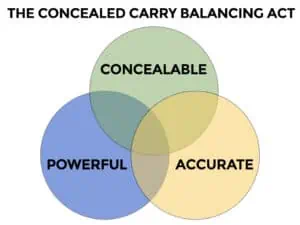 The modern compact 9mm is as close to the sweet spot of accuracy, firepower, and concealability as has ever been invented. All of these guns are small enough to carry regularly and hold enough rounds to get the job done. Yet they are still easy to shoot. And because they shoot the inexpensive 9mm cartridge, they’re great for practice and training. This helps you become not just a gun owner, but a trained and competent gun owner.
The modern compact 9mm is as close to the sweet spot of accuracy, firepower, and concealability as has ever been invented. All of these guns are small enough to carry regularly and hold enough rounds to get the job done. Yet they are still easy to shoot. And because they shoot the inexpensive 9mm cartridge, they’re great for practice and training. This helps you become not just a gun owner, but a trained and competent gun owner.
You may be tempted to think that a smaller subcompact 9mm pistol like a Glock 48 or Sig P365 is the best first gun for you. Resist that temptation. While smaller and lighter than the other guns I’ve mentioned, that decrease in size comes with a price. The smaller size means there is less mass to soak up recoil. There is also less gun to hold onto as the gun recoils.
You should first learn to shoot well with a slightly larger 9mm, then move on to a smaller, more comfortable gun for concealed carry.
Other Options
Pocket pistols are a great idea for people who can carry a gun at work, but some people work in an office environment that makes concealing even a compact 9mm a difficult task. However, everything I just talked about with a subcompact 9mm is even more true with a pocket gun. Yes, they are an excellent choice for very discreet concealed carry. No, they are not your best choice for a first gun.
In addition, it’s hard to argue against the power that a long gun such as a shotgun or rifle brings to a home defense situation. However, what they give you in firepower comes at the cost of flexibility. They are not as easy to wield as you move inside your house. They also have limited (if any) use outside your home, as these days people tend to frown on slung shotguns being carried into a shopping center. If you think a long gun might be right for you, that’s fine, but you should also look at how owning a pistol in addition to your long gun gives you even more personal protection options.
Whatever gun you chose, practice with it regularly and with a purpose. A firearm is not a talisman of self-protection that wards off evil. Rather, it is a tool that responds to the skill of the user. The more skilled the user, the better the results will be when it matters the most. Shop around for the best first gun for you, then take it to the range so you can be the best possible marksman.


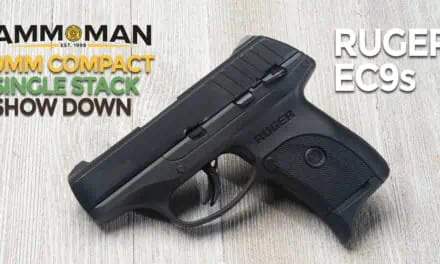
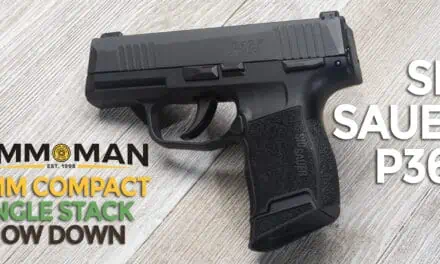
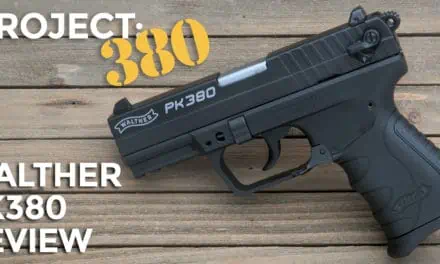
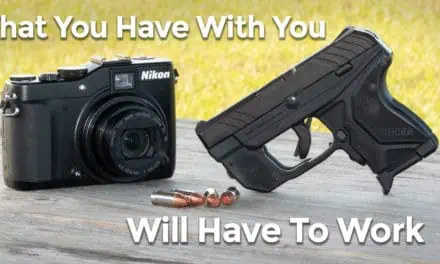

I get asked this same question all the time, and usually explain that there is no one answer. Most of the gun stores people tend to gravitate to in my state are not friendly to the newbie. They are more geared towards folks like me, who are there to make an informed purchase and then GTFO. Those commissioned sales people can not afford to spend a couple of hours going over caliber, action, holsters, ammo, proper carry, gun controls, etc. with someone that is new to firearms. That’s where I come in. I have multiple carry handguns in different calibers and actions. I offer to take these folks to my club range and let them experience different firearms. The first hour or so is dedicated to firearm safety, range rules, and going over the “four rules” repeatedly. I monitor their handling skills closely, and strictly re-enforce muzzle and trigger discipline. One woman I took to the range thought my Ruger LCP in .380 would be easy to shoot because it was small. WRONG! The small size and recoil was harder for her to manage than my Dan Wesson .357 magnum loaded with .38+P, which she was able to dump all 6 rounds in the black at 7 yards. That outing was the first time she ever saw a firearm in person, and she totally enjoyed the experience. The other problem, especially for women is how they want to carry concealed, depending on what they are wearing. I am not a fan of the concealed carry purse, because it is too easy to set it down somewhere, leaving the firearm unsecured. Personally speaking, my concealed carry firearm of choice and ammo all depends on many factors, including weather and my clothing, where I am going, time of day, is it a soft target, etc.
My retirement plans are to open a home based firearms business including an outdoor range, with a focus on personal customer service, training in all aspects including reloading (no one does that!), become an NRA instructor and RSO, sales of new and used firearms, accessories and ammo.
Excellent article, Kevin. Very understandable to the intended reader, balanced, and comprehensive.